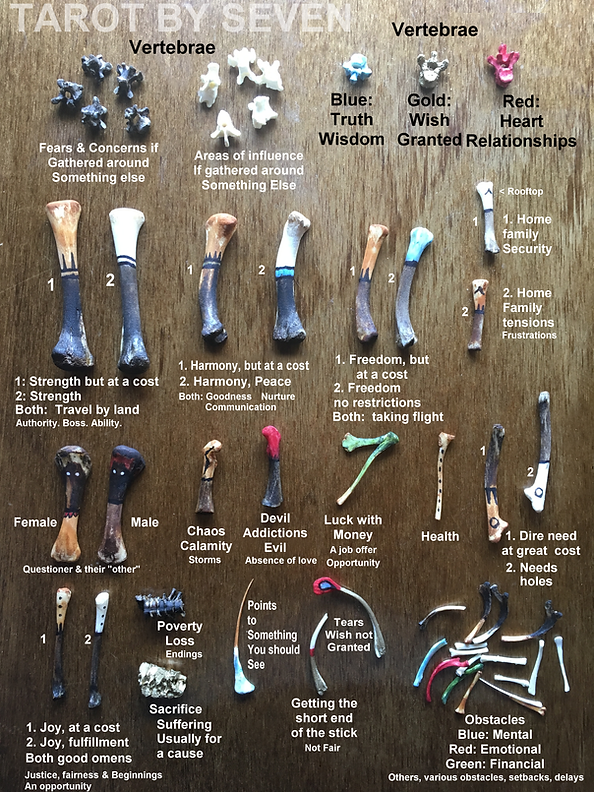



Marking bones or items in your bone-casting set helps distinguish them during readings, especially when items look similar. While optional, marking adds clarity and personal meaning to your practice. Here’s how to approach it, based on my methods.
Why Mark Your Bones?
Marking ensures you can quickly identify each item’s role or meaning in a throw. You can paint, carve, or use a marker to create symbols, colors, or patterns that resonate with you.
My Marking System:
-
Stripes for Identification: I mark wings with one stripe, legs with two, making them easy to differentiate.
-
Dual Colors: One bone is split into two colors to represent positive/negative or good/bad luck, interpreted based on its direction and nearby items.
-
Symbols for Specificity: A bone marked with a travel symbol indicates air travel.
-
Man/Woman Representation: Many mark two bones for a man and woman, often one for the client. I use small man and woman figurines instead, but choose what works for you.
-
Thorn Marks: On some bones (e.g., harmony, truth, justice), I add pointed “thorn” marks to signify outcomes “won at a cost,” reflecting struggle or sacrifice.
-
Face-Down Meanings: Mark one side of an item and leave the other blank to assign specific meanings when it lands face-down.
What to Include in Your Set
Your set should reflect the themes you want to explore. Essential items include:
-
Man/Woman: To represent the client or key figures.
-
Core Concepts: Bones or items for family, home, justice, joy, triumph, nostalgia, sacrifice, pain, tears, relationships, promises, wishes, needs, poverty, money, truth, etc.
Create a system that feels intuitive to you, using marks, colors, or symbols that align with your practice and make interpretation seamless.


